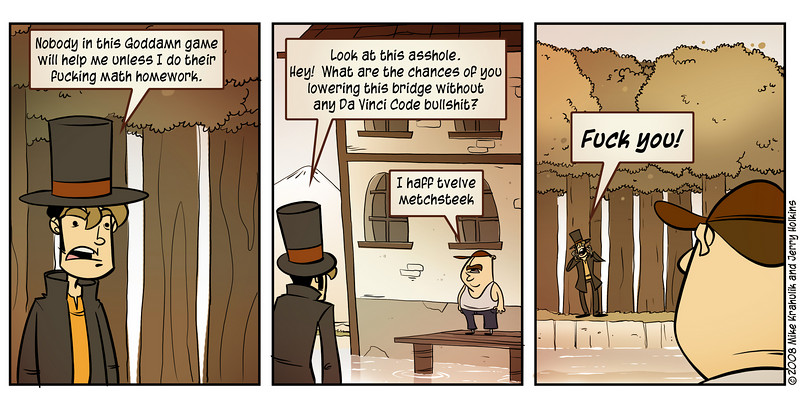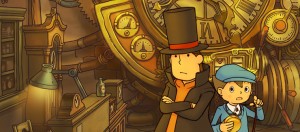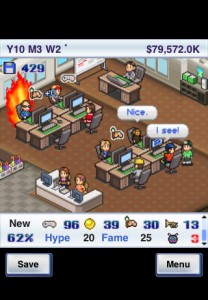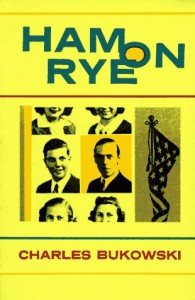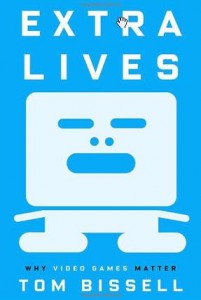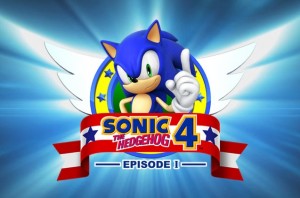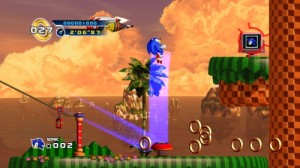The Playstation 2 turned 10 on Oct. 26th and I celebrated by starting a blog post that wouldn’t be completed until November 17th. Oh well, that’s how life goes sometimes. Here are my top 10 favorite PS2 games. As I picked them out I was most surprised by how relatively few of the several hundred PS2 games I own that I’ve actually completed. This isn’t representative of the quality of games on the PS2, only that my tendency in those days was to quickly move from game to game, only playing them long enough to get the gist, or until they began to present a challenge that I didn’t feel like overcoming. I also bought anything that seemed like a good deal, even if I knew I had no desire to ever really invest any time in it. Anyway, these are games I can confidently state that I did invest time in, and felt it was time well spent.
 Katamari Damacy
Katamari DamacyFrom the moment you see the erupting rainbows and dancing bears and geese singing the glorious theme song you know that Katamari Damacy will be a delightful experience, and it never disappoints. The concept is simple: push both of the analog sticks forward to move a ball forward, rolling into anything smaller than the ball, allowing you to pick it up and grow larger so that you can pick up even bigger objects.
Convincing yourself that it’s the gameplay of Katamari that matters is tempting, but really it’s the way the simple design keeps your mind churning, searching for the next biggest item (but not too big), while your brain and eyes are bombarded by the happy music and the urge to try to make sense of the ridiculous scenarios the player is disrupting.
The greatest achievement of Katamari Damacy is how the entire game is structured around building up to a massive last hurrah. In each level you are asked to make your ball larger than the last, climaxing in a final level where you’re given something like 20 minutes to progress from gathering tiny thumbtacks to picking up enormous oil tankers and fluffy clouds. It’s impossible to play without a smile on your face, and that’s why it’s at the top of my list of great PS2 games.
- Metal Gear Solid 3: Snake Eater
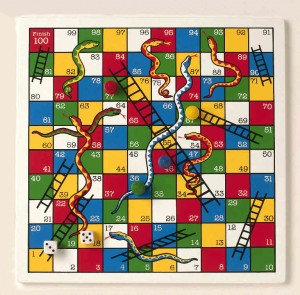 My favorite part of Metal Gear Solid 3 takes place about half-way through the game. You’ve infiltrated your way deep inside of the enemy base and you’re making your way back out by climbing a ladder. The ladder climbing goes on for more than two minutes. Shortly after you begin climbing, a woman starts singing the theme song. It’s a 007-esqe spy love song whose chorus is a reference to the game’s “Snake Eater” subtitle (which came first, the title or the song, we’ll never know).
My favorite part of Metal Gear Solid 3 takes place about half-way through the game. You’ve infiltrated your way deep inside of the enemy base and you’re making your way back out by climbing a ladder. The ladder climbing goes on for more than two minutes. Shortly after you begin climbing, a woman starts singing the theme song. It’s a 007-esqe spy love song whose chorus is a reference to the game’s “Snake Eater” subtitle (which came first, the title or the song, we’ll never know).
During this scene your mind is constantly wondering what is going on. The game has just settled into a groove and you’ve just finalized your decision to play the game with stealth or with shotgun-to-the-face aggression. It breaks your groove, and you start to wonder, “am I doing this right? What if I stop moving, would the song go on? Is the game broken?” And when you get to the top you’re instantly thrown back into the action, with helicopters and manned turrets all aimed right at you.
This scene is amazing for the way it comes out of nowhere forcing you to think, even for a moment, about your role in the game and the game’s role as a game. Not many games are willing to try that, let alone succeed.
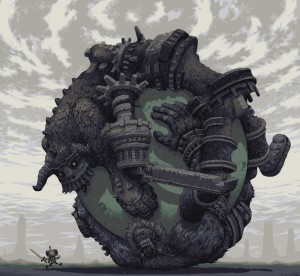 Shadow of the Colossus
Shadow of the ColossusI first played Shadow of the Colossus at E3 shortly before its release. The E3 demo put you on a horse near the first colossus and gave you no direction. A few people had been walked through defeating the colossus by the Sony reps, but me? I just wanted to try out the controls.
E3 is an interesting place to play games because you’ve generally got five minutes or less to play a game and take away as much as you can from the experience. With a complex, deeply layered game like Shadow of the Colossus, this is difficult.
For starters, there’s the controls: The game has the most common moves mapped to simple, easy to understand buttons, but if you want to do anything beyond running and jumping you’ve got to contort your hands into ridiculously complex positions. I spent my 5 minutes learning how to get the horse running, then learning to stand up on the horse and shoot arrows at the colossus. You can’t harm the first colossus with arrows, but that didn’t matter. The joy of putting together all of these moves into this acrobatic feat, and knowing that I did it myself without any instruction made me know that I was playing something special.
When the final game arrived months later, it took this joy and added a world with a strong sense of versimilitude and a tone that gracefully fades between serenity and brutality. Like Katamari, it’s hard to play the game without a smile on your face, but in this case there’s a certain sadness beneath that smile.
- Devil May Cry
 I was at Brady Games working on the Final Fantasy X strategy guide when the Devil May Cry demo arrived. I had been following it, but I had imagined a more stylish Onimusha. What I got was the first 3D action game that captured the tight controls and fast action of a fighting game without sacrificing the narrative progression of an action game.
I was at Brady Games working on the Final Fantasy X strategy guide when the Devil May Cry demo arrived. I had been following it, but I had imagined a more stylish Onimusha. What I got was the first 3D action game that captured the tight controls and fast action of a fighting game without sacrificing the narrative progression of an action game.
I’m not sure exactly why, but I don’t believe anybody has been able to successfully capture the feeling or the balance between humor and “coolness” of Devil May Cry since.
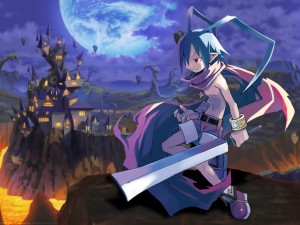 Disgaea
DisgaeaFinal Fantasy Tactics was a revelation for me. It was like someone took a complex game like chess, made it even more complex, added in the draw of a scripted story, and released it as a videogame. It was so complex that if you tried hard enough and pieced together the game’s systems in the right way you could become all-powerful with little effot, but you’d have to really think it through to do so.
Disgaea was the next evolution of that. They took the basic mechanics of a tactics game and, sloppiness be damned, added in layers of depth. You could travel virtually anywhere on the board from the very start by picking up other characters and throwing them. You could clear entire boards by solving a puzzle game that lives inside of the colors of the tiles beneath the characters. You could level up characters to insane levels or simply level up their weapons. It’s a lesson in removing the constraints from a game’s design and just letting the systems conflict with each other until something beautiful gets spit out.
- God of War
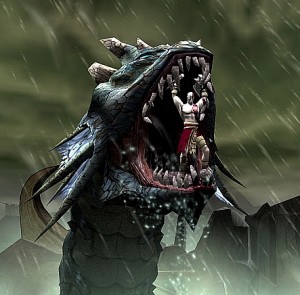 I have a disconnect with others about why God of War is a good game. I was in a conversation last month with a fellow member of the St. Louis Game Developer meetup group about why he likes it. He likes the game primarily for the way it provides so many moves and combos to take out your foes with. I argued that the number of moves doesn’t matter since you can use the same ones to kill anything. No, it’s not the fighting that I like. What I get out of God of War is primarily an appreciation for its storytelling. Although the story itself (a bastardization of Greek mythology) isn’t that great, the way it’s told is a lesson in manipulating a player’s understanding of their environment. A completely linear game, God of War uses the movement and positioning of its camera to guide the player through its environments, subtly guiding the player’s eyes toward whatever the designer intends. There are a few places in the game where you traverse over an environment once, then come back later and barely notice that you’re in the same place because the camera is following you from a different position. These moments are what I love about the game.
I have a disconnect with others about why God of War is a good game. I was in a conversation last month with a fellow member of the St. Louis Game Developer meetup group about why he likes it. He likes the game primarily for the way it provides so many moves and combos to take out your foes with. I argued that the number of moves doesn’t matter since you can use the same ones to kill anything. No, it’s not the fighting that I like. What I get out of God of War is primarily an appreciation for its storytelling. Although the story itself (a bastardization of Greek mythology) isn’t that great, the way it’s told is a lesson in manipulating a player’s understanding of their environment. A completely linear game, God of War uses the movement and positioning of its camera to guide the player through its environments, subtly guiding the player’s eyes toward whatever the designer intends. There are a few places in the game where you traverse over an environment once, then come back later and barely notice that you’re in the same place because the camera is following you from a different position. These moments are what I love about the game.
Early on in God of War you run across a grave digger who gives you some quick advice then gets back to work. Later, Kratos is sent to hell and ends up climbing out. When you get to the top you realize that you’ve exited hell through the hole the grave digger was digging. It’s this sort of circular level design that makes a world feel real and makes it feel like your actions are part of a bigger story. This is why I like God of War. For making me think about these things.
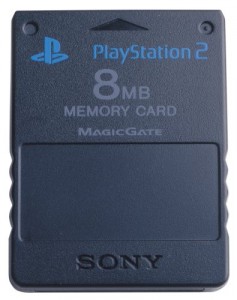 Ico
IcoMy wife doesn’t like me telling this story, but I tell it all the time. Sorry baby!
One of our biggest fights ever came early on in our dating relationship when she deleted my Ico save game. She had been watching me play the game, and (despite showing very little interest in games until then) wanted to play it herself. I finished the game the night before and was telling her how amazing the ending was, and when I came back from my classes I found her playing it, only to discover that she deleted my save game. I’m pretty sure I yelled and screamed and tried to make her feel like a moron for not just saving in a different slot or using a different memory card. Clearly it’s strange to feel passionately about something as small as this, but at the time it really bothered me. I think I saw my saved games almost as a body of accomplishments that I was building up over time. The saved games on my memory cards were an invisible body of work that I was creating. This was a time before achievement points, so these cards were all I had to prove my victories.
I’ve learned now, thanks in part to our fight, that seeing game progress as an actual accomplishment is sort of ridiculous. What matters is how the actual act of playing the game makes you feel, not whether you can put another notch in your belt. If there’s any game that can make you feel, it’s Ico. Our fight isn’t why the game is on this list, that’s why. The way the game creates a relationship between Ico and Yorda using subtle animation hints and cooperative puzzle solving is about as close as anyone’s ever gotten to providing a relationship with an AI that the player actually cares about. Bad box art aside, Ico is a game that everyone should play.
- Transformers
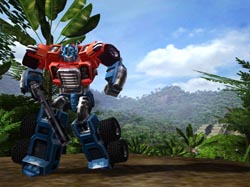 Full disclosure: I’m a 32 year old father who still collects Transformer toys. I’ve consciously limited my collection to just the various iterations of Optimus Prime, but now that it’s on the table I can admit that I’m a bit biased when I say that Transformers has a better single player campaign than Halo.
Full disclosure: I’m a 32 year old father who still collects Transformer toys. I’ve consciously limited my collection to just the various iterations of Optimus Prime, but now that it’s on the table I can admit that I’m a bit biased when I say that Transformers has a better single player campaign than Halo.
The comparison is a admittedly a bit of a stretch. Transformers is a third person free-roaming action shooter with platforming elements, while Halo is a fairly strict first person shooter, but the first level invites comparison. It doesn’t look like Cybertron, it looks like you’re on one of the rings of Halo! What Transformers succeeds at is delivering a truly open-ended action game. Almost all of the extremely large, open-air levels are designed with a boss hiding out somewhere waiting to be hunted down. Once you trigger the boss fight you can run anywhere in the level to actually fight it, reinforcing the open-world feeling of the game.
Once you do a bit of exploring it’s usually pretty obvious where the boss is, but you probably won’t want to stop there. Exploring is where this game excels. Hidden in each level are mini-cons. These are small transformers that give your bot new weapons or special abilities. You can use a limited number of these at any time and can swap them out in between stages. Trying out different abilities and experimenting with different combinations of mini-cons leads to a lot of possible strategies and unique ways of taking on a stage. You’re encouraged to find your own way to play the game, and mine usually involves driving full speed into a decepticon to launch them into the air, and trying to shoot them to death as they fall to the ground – another one of the awesome features of the game.
Despite being a licensed game, Transformers is an underrated gem that was ahead of its time and still hasn’t had its most unique attributes emulated successfully.
- Guitar Hero
 My wedding reception was awesome. We had a DJ who didn’t play the chicken dance, a photo booth where everyone could go and get silly pictures taken, and Guitar Hero. Without Guitar Hero we would have never considered having videogames at our wedding reception, but thanks to Harmonix’s key understanding of both music and America, they broke down a wall and made a game that is socially acceptable.
My wedding reception was awesome. We had a DJ who didn’t play the chicken dance, a photo booth where everyone could go and get silly pictures taken, and Guitar Hero. Without Guitar Hero we would have never considered having videogames at our wedding reception, but thanks to Harmonix’s key understanding of both music and America, they broke down a wall and made a game that is socially acceptable.
I can’t put enough emphasis on how American Guitar Hero is. The concept of the guitar music game was pioneered by the Japanese with a game called Guitar Freaks, but Guitar Hero refined that concept in a way that makes it uniquely American. Guitar Freaks’ soundtrack featured a mix of music – some made specifically for the game, some Japanese pop music, and a few licensed American tracks, such as Alanis Morisette’s Ironic. That last one is a perfect example of Japan doing things wrong. When people think of guitar music, Ironic isn’t exactly the first song that comes to mind. In fact, it may be nearly the last. Guitar Freaks attempts to pull in players solely by making a fun game. It succeeds, for the most part, but the song list practically requires that you have an interest in music games before you play it. Guitar Hero went the other route and selected songs people knew and would have been interested in playing outside the context of a game, thus instantly making it more appealing to outsiders.
Then there’s Guitar Freaks’ guitar itself. It looks the same as the one you use to play Guitar Hero/Rock Band, but it only has three buttons. With three buttons, the feeling of moving your hands up and down a guitar’s neck to create different chords is completely lost. Having only three buttons, Guitar Freaks is forced to place a higher emphasis on rhythm and timing than on finger positioning. It puts the “game” aspect of playing higher than the “experience” aspect, and, ironically, it’s a weaker “game” for doing so.
With how Activision has been running the brand into the ground, it’s easy to forget what a breakthrough Guitar Hero actually was, but when I look back at the PS2 games that affected my life it’ll always be hard to forget. After all, it’s in my wedding pictures!
- Final Fantasy XII
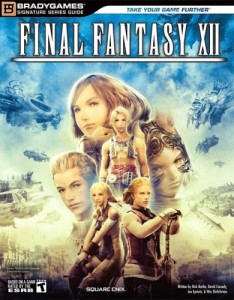 The thing that kept running through my head as I played Final Fantasy XII was how amazing it is that $50 can buy you so much. Final Fantasy XII has tons of depth, looks amazing, has a lot of variety, and has a great sense of pacing. Most impressive is how it fixes the biggest problem present in Japanese Role Playing Games – their insistence on asking you to make non-decisions.
The thing that kept running through my head as I played Final Fantasy XII was how amazing it is that $50 can buy you so much. Final Fantasy XII has tons of depth, looks amazing, has a lot of variety, and has a great sense of pacing. Most impressive is how it fixes the biggest problem present in Japanese Role Playing Games – their insistence on asking you to make non-decisions.
JRPGs have been broken for a long time. The fun part of playing videogames involves making decisions and learning from the consequences. With that said, think for a moment about how JRPG battles typically play out. You’re presented with an enemy. You attack it and discover that regular attacks don’t do damage. You notice that he’s ice blue, so you attack him with fire. It does critical damage. You’ve now made the connection that ice blue enemies are weak against fire. It was pretty fun! At this point, RPGs trip over themselves by asking you to fight that same enemy over and over again, presenting you with the same decision each time. At this point this option ceases being a decision and starts to be tedious. If you keep playing it’s often not because you’re still having fun, but because you’re too invested in the story to turn back.
Final Fantasy XII fixes this by taking the making of these decisions and moving it up front to an almost meta level. You make the decision once by programming the secondary characters in your party, and you watch as they perform the actions you tell them, slowly evolving your strategy as more options open up and a greater variety of enemies present themselves. It brings the fun back to decision making, and it allows the design to explore greater complexity elsewhere.
It’s a very complex game, which lent itself well to the strategy guide that I helped write. I used the money from that guide to buy my wife’s wedding ring, but it’s not on this list for that, it’s here for being such a great game. And sort of like marriage, you get a lot for your money when you stop to think about it.
 I finished my last mission, played through the endgame, got the good ending, and felt empty. Part of this was the unfulfilling endgame, but the majority of it was that I had taken this experience which was designed around making your decisions feel less like binary game options and had reduced it almost entirely to binary game options. When the decisions felt like the same type of decisions I was making in the election I was overjoyed. I cared! This is ultimately the greatest achievement of Fable III. There’s a time when you actually care about your subjects. But all of that goes away when you inevitably begin turning those decisions into a game again.
I finished my last mission, played through the endgame, got the good ending, and felt empty. Part of this was the unfulfilling endgame, but the majority of it was that I had taken this experience which was designed around making your decisions feel less like binary game options and had reduced it almost entirely to binary game options. When the decisions felt like the same type of decisions I was making in the election I was overjoyed. I cared! This is ultimately the greatest achievement of Fable III. There’s a time when you actually care about your subjects. But all of that goes away when you inevitably begin turning those decisions into a game again.











